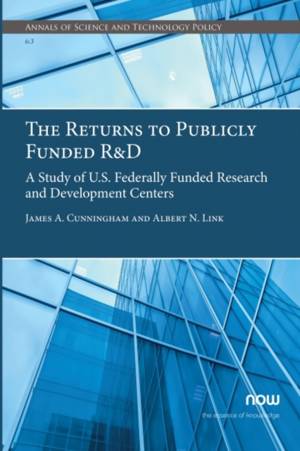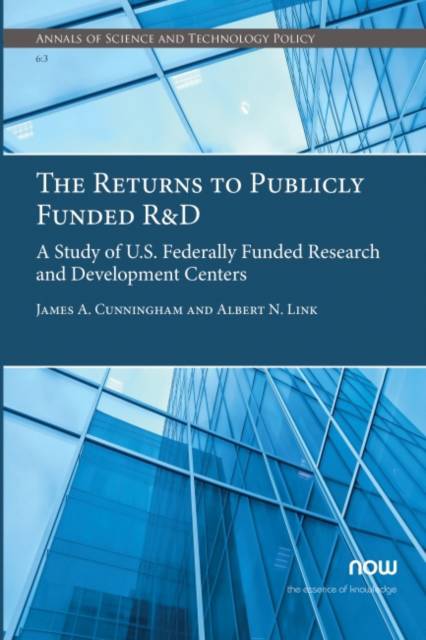
- Afhalen na 1 uur in een winkel met voorraad
- Gratis thuislevering in België vanaf € 30
- Ruim aanbod met 7 miljoen producten
- Afhalen na 1 uur in een winkel met voorraad
- Gratis thuislevering in België vanaf € 30
- Ruim aanbod met 7 miljoen producten
Zoeken
The Returns to Publicly Funded R&d
A Study of U.S. Federally Funded Research and Development Centers
Albert N Link, James a Cunningham
€ 76,95
+ 153 punten
Omschrijving
The Returns to Publicly Funded R&D focuses on the returns to U.S. public-sector investments in R&D and the accompanying new empirical analysis relates specifically to the returns to public-sector R&D expenditures in U.S. Federally Funded Research and Development Centers (FFRDCs). One motivation for studying the rates of return to public-sector R&D is the paucity of existing literature on the topic. However, there are two other important motivations for studying the rates of returns to public-sector R&D: a public accountability motivation and a mandated public policy motivation. Although the analysis of investments in R&D in FFRDCs presented herein is econometrics based, there is however a frequently overlooked program evaluation literature that also offers insight into the rates of returns to public-sector R&D. Examples of the program evaluation literature is presented in Section 3 for completeness as well as to illustrate a broader rate of return concept than that presented in the econometrics-based literature. U.S. legislative actions to increase publicly funded R&D in support of private-sector R&D are discussed in Section 4. For the purpose of providing context, a brief history of FFRDCs in the United States is presented in Section 5. FFRDCs have surprisingly been an overlooked element of the public-sector ecosystem that supports public-sector research. An empirical analysis of U.S. public-sector R&D expenditures in FFRDCs, and the associated scientific publications, is presented and discussed in Section 6. Concluding observations about the themes discussed throughout this monograph are offered in Section 7.
Specificaties
Betrokkenen
- Auteur(s):
- Uitgeverij:
Inhoud
- Aantal bladzijden:
- 100
- Taal:
- Engels
- Reeks:
Eigenschappen
- Productcode (EAN):
- 9781680839449
- Verschijningsdatum:
- 9/03/2022
- Uitvoering:
- Paperback
- Formaat:
- Trade paperback (VS)
- Afmetingen:
- 156 mm x 234 mm
- Gewicht:
- 149 g

Alleen bij Standaard Boekhandel
+ 153 punten op je klantenkaart van Standaard Boekhandel
Beoordelingen
We publiceren alleen reviews die voldoen aan de voorwaarden voor reviews. Bekijk onze voorwaarden voor reviews.











